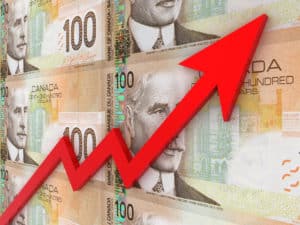In June, the big news from Parliament Hill was that the federal government would be extending the CERB by another eight weeks. The extension brought the maximum amount of CERB for an individual to $4,000 (over the entire eight week period). For many Canadians, it was a welcome development. Despite the record number of jobs added in June, unemployment remains historically high. The extension was therefore needed to keep Canadians afloat during the ongoing pandemic.
Now, however, the CERB appears to be winding down for good. The program is scheduled to officially end on October 3, with the last payment period ending on September 26. While the benefit will be available retroactively until December, the writing is on the wall. Now, the only question is who will actually get the $4,000 made available by the extension.
Only two CERB eligibility periods remain
CERB payments are based on four-week eligibility periods. Although the benefit is sent out bi-weekly, payments are assessed for blocks of four weeks. When you’re approved for the CERB, you get $2,000 for the period that you applied for.
As of right now, there are two CERB eligibility periods remaining:
August 2 to August 29, and August 30 to September 26.
If you apply and get approved for both of them you should be able to get the $4,000 in benefits for the remaining periods. However, it’s been widely reported that CERB applications are getting more scrutiny than they had been previously.
Because of fraud concerns, the CRA has introduced an “identity verification” line that has delayed application processing. While you may still receive the full $4,000 benefit, you could have to wait on the money. So it’s probably not best to assume that the CERB will pay your bills in August and September.
What to do as an alternative
If you’re a Canadian who depends on the CERB to get by, there isn’t much you can do right now other than apply for it. Many industries are still seeing widespread joblessness, so the CERB remains an indispensable benefit for those hoping to stay afloat.
What you can do, however, is plan for the future.
By establishing long-term savings, you can give yourself a financial cushion that can carry you through tough financial periods. Not only that, but you can invest your savings in tax-sheltered accounts–such as TFSAs–to grow your money tax-free. The end result could be a sizeable portfolio that pays you a nice income supplement every year.
One good beginner investment for such a portfolio would be the iShares S&P/TSX 60 Index Fund (TSX:XIU). ETFs are considered good investments for beginners because they provide guaranteed “average” returns (compared to the benchmark) and have low fees. XIU is one of the best such funds in Canada.
Based on the 60 largest publicly traded companies in Canada, it has solid diversification and is made up of mostly established companies. It has a low fee of 0.18% annually–low enough that you won’t even notice it.
Run by BlackRock, it’s backed by one of the world’s most respected financial service companies. All-in-all, a great investment to start building up passive income.








